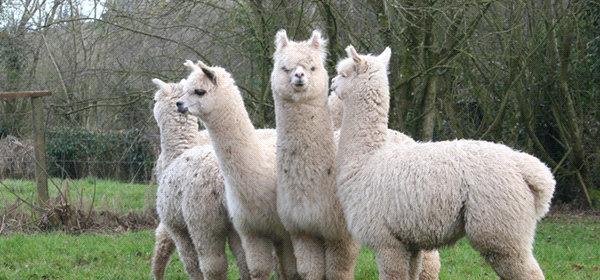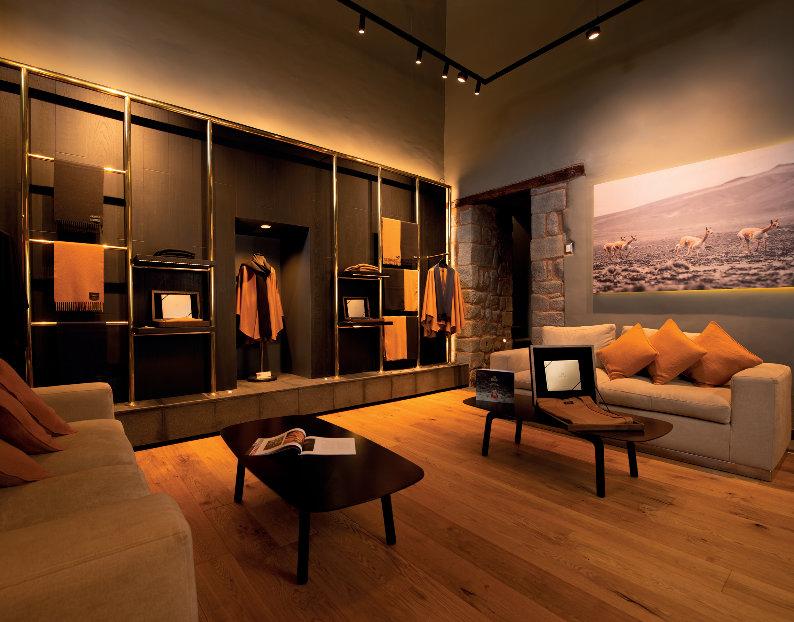
9 minute read
Stories From The Fires
ALPACA BREEDERS

Advertisement
On New Years Eve the south coast region of NSW experienced the start of what was to become six weeks of living with the constant threat of bush fire, and many experiencing first hand fires’ devastating effects.
We share the stories and images from that �me from four alpaca breeders located in the region, all affected in some way yet living hours apart, the fires were that extensive.
Our farm is located fortunately in a larger cleared dairy farming area within the Bega Valley, normally a lush green place surrounded by ocean to the east and the Great Dividing Range to the west. The rolling hills that extend down from the mountains are mostly Na�onal Park or covered in eucalypt forest.
But a�er months of ongoing drought on and off for the last two years, the valley was �nder dry and the grasslands brown from the Summer heat.
We luckily did not have fire reach our farm, but we had friends evacuate their alpacas or themselves here on three occasions during the six weeks we lived with the fires surrounding our town. Another of our fellow alpaca breeder friends were first to be affected on New Years Eve, fleeing at 1am in the morning from a fire ball raging toward them from the forest to their west, a fire that was not predicted to arrive un�l later on New Years Day. They le� their large herd of alpacas, ca�le, goats and sheep, grabbed their two dogs and fled to what they thought was the safety of the historical south coast town of Cobargo.
Some hours later, they awoke from sleeping in their car to find flames all around them as Cobargo was being impacted by a fire nobody expected to see there. The fire burnt to the ground many of the towns historical wooden buildings. They then fled to the evacua�on centre set at the beachside town of Bermagui, where they were stranded with no phone or internet. The fire was so extreme and out of control they feared they had lost their home, their farm and all their animals. The wait was excrucia�ng, taking days to find out what was le� if anything due to the difficulty of even ge�ng into the property. The RFS fire map showed their property was in the impact zone. For this breeder the back breaking and financially devasta�ng cost of feeding animals on burnt pasture, and rebuilding infrastructure will con�nue for the rest of this year and beyond.
Then around the end of 2020 they will be faced with an addi�onal cost - the one of DNA tes�ng any cria born from the results of their 5 males (3 studs and 2 yet to be cer�fied) running with their herd of females for 2 weeks a�er all the animals combined once the fences burnt down. They would no doubt have harrowing stories of survival themselves if they could speak. Sadly they did lose one alpaca to trauma from being burnt and another had minor burns but will survive.
The cost of DNA tes�ng is $280 per cria and they es�mate a poten�al drop of up to 30 cria conceived during the fires - that is a huge cost of $8400 to ascertain the sire, then the added cost of cer�fica�on if none of the registered males prove to be the sire for some of these cria, and the up and coming boys managed to start their stud career earlier than planned.

This breeder also did not see electricty return to their property for 5 weeks a�er the fires first came through, and with limited communica�ons were also affected by isola�on. I kept in contact with them via Facebook messaging to share current fire updates as the fires con�nued to rage through our valley, sent them latest RFS fire maps and weather predic�ons, located hay distribu�on near them and offer a point of contact, a chance to come here for respite and a hot shower! Many people experienced the tragedy of losing their homes & some even their lives. Others have suffered losses that are not so obvious, but s�ll have a profound affect on their ability to return their proper�es, and their mental health to pre fire condi�on.
Trees had fallen over the roads and others were in danger of falling, spot fires were s�ll appearing in the fire zone and thick smoke made driving hazardous. Three days a�er the fire swept through their town their neighbour managed to use his tractor to make his way into their property, to find their home was s�ll standing and their livestock were alive, despite every fence on the property being burnt and the paddocks mostly black and scorched. Sadly the neighbour had lost his home, although his ca�le survived.
RESPONSE FROM THE AUSTRALIAN ALPACA ASSOCIATION Over the past few months we have watched with increasing concern as our members have not only been suffering from these dreadful fires but also have to cope with the challenges of maintaining their farms in drought.
As a board we are monitoring what is happening and, with the support of our office staff, we are con�nuing to lobby government to provide support for our members during this �me. We were asked to submit recommenda�ons for assistance for our members to (former) Minister McKenzie. We are aware that some of our members do not fall within the criteria for some grant payments and acknowledge the added stress that this may cause them and we are making sure that government is aware of this issue. Through the CEO via facebook we have had regular updates on various grants, assistance and help. Board members have, where possible, a�ended community mee�ngs following fires, to ensure we have been able to meet with our members.
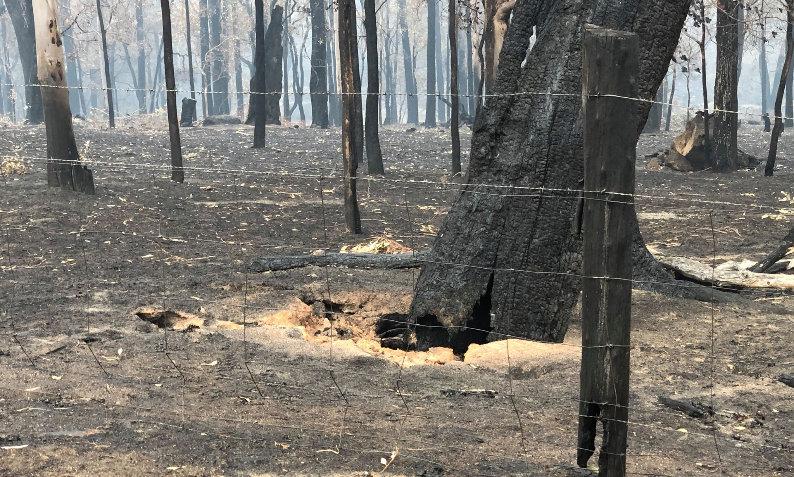
Over the next few weeks and months we hope to provide informa�on and a possible forum for members that may help them as they start to rebuild their proper�es, land and lives. We will also, shortly, share advice that we have requested from Dr Jane Vaughan regarding the effects of smoke on our alpacas. Any alpaca breeders affected directly by the fIres can contact Amanda Olthof by email amanda@alpaca.asn.au
Another alpaca breeder further north in the Eurobodalla shire almost lost their property when fires came out of the forest a�er several days of spot fires.
They rang 000 and luckily the RFS was close by and came to their property with mul�ple firefigh�ng vehicles that were supported by water bombing aircra� as per the photo at the start of this ar�cle. Their property is located at the end of a road at the base of the forest, so without the RFS turning up in such a �mely fashion it was likely they would have lost so much more than burnt paddocks & fences that now need to be replaced at the cost of tens of thousands of dollars. During these weeks of constant fire threat and days in between of anxious wai�ng for the next ‘bad fire weather day’, and praying fo rain to come and end the drought and put out the fires, we endured many days of heavy smoke across the whole of the south coast. Days where a mask was required to leave the house and the world around us took on an orange glow with the smell of smoke and fine ash pervading every corner of the house as shown below.
On the weekend of the last awful climax of this fire season before the rain did come, we had friends who live just 12km’s away evacuate here for 4 days, with their alpacas, 3 dogs and possessions loaded into their cars.

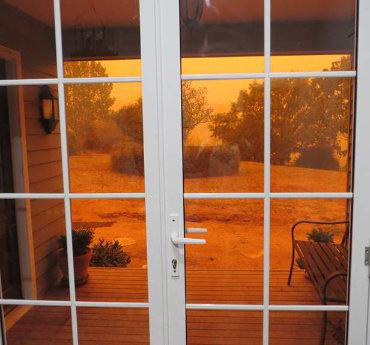
As we sat and watched local council video updates from the RFS on facebook together and scoured the Fires Near Me site for any change in the fire spread, watched wind sites, hotspot sites and listened to the RFS radio scanner for updates, we found the wai�ng was the worst of all. The hours passed, our friends returned home to check their property well before the fire was due to impact, and they returned with nerves frayed as they told us about the sound like freight trains roaring down the mountain toward them, and seeing the fire star�ng to burn the mountain behind their home.
Whilst outside checking our fire prep and feeding our alpaca herd, we could even hear the rumble of the fire in the distance. Tears flowed one �me when it looked like our friends had lost their home, but a�er a trip down to the local RFS it was confirmed that the RFS had managed to save their home. Relief spread across the faces of everyone present.
During this campaign fire event as the RFS calls it, we had on average once a week an extreme fire risk day where the RFS put out worst case scenario fire spread and ember a�ack predic�on maps. One of those had the embers at our street, but luckily they did not reach this far. However another map showed the Border fire that crossed from VIC into NSW spreading only about a third of the distance the fire actually travelled that night, destroying small villages in it’s path south west of Eden. This experience le� everyone in a state of constant anxiety, not feeling confident that the maps were accurate, constantly looking out of windows if smoke started to thicken or at night to see if the glow of fires in the surrounding mountains were ge�ng any closer.
It takes many weeks and months, or even longer for some people, just for the anxiety levels to drop back to normal. The constant state of stress causes health issues, sleepless nights and nightmares when you do sleep. The fires down in this part of NSW are not yet, as of late February 2020, fully out. Fire s�ll lingers in tree stumps that have the poten�al to reignite as we did not see the huge rainfall totals that further north in NSW received. But for now at least, the threat is contained to mostly small isolated pockets within the heavily wooded or steep terrain areas, and our wonderful Rural Fire Service personell are s�ll working �relesly to end this fire season that has impacted so many in this region.
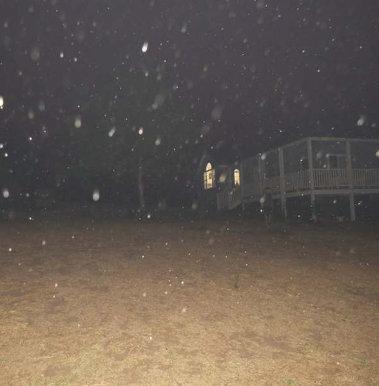
4.30pm in the a�ernoon, smoke from the border fire rolled in crea�ng a solar eclipse and fine ash fell from the sky. Day turned to night within 30 minutes.

ABOVE: Alpacas that were saved by the RFS covered in ash.
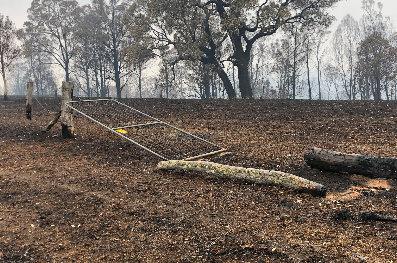
LEFT: Paddock gates collapsed a�er suppor�ng posts are burnt off at the ground, allowing stock to roam freely.



